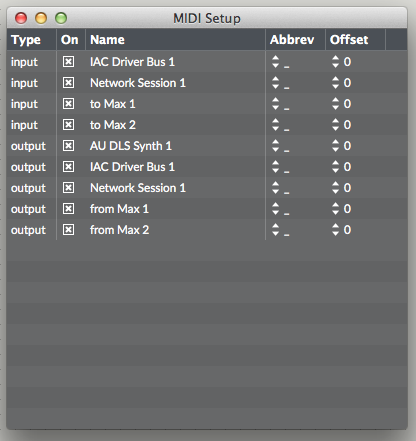

By looking at the rest of the patch, you probably can figure out how, even without using the help file.
#Max msp midi keyboard Patch#
The point of the Lobjects is to provide a set of high level abstractions that are powerful and obvious- obvious meaning that when you look at a patch and see something like Ladd, you understand it’s something to do with adding lists. I realized during this experience that it is difficult to use Max to teach general issues because we keep getting distracted by trivia. Someone raised his hand and asked “how?” The resulting explanation took about 5 minutes and used up all of the rather small white board. The table object works well for this, and I told my students to convert the list of possible notes to a table.
#Max msp midi keyboard how to#
I was teaching the students how to use probability in Max algorithms. The Lobjects were born in a composition class. As someone who is just getting started I can appreciate why Peter was inspired to create this library: Lobjects was very kindly created by Peter Elsea of University of Santa Cruz. It’s a library of Max objects that support number manipulation (like absolute value, count, and repeat).

In my initial scan of Maxobjects I found Lobjects. The book’s teaching approach is focused primarily on hearing, which we consider a faster and more enjoyable way to absorb new concepts than through abstract formulas. It begins with explanations of basic programming and acoustic principles then gradually builds up to the most advanced electronic music processing techniques. This tutorial is designed for self-study, principally for composers. This book is an attempt to fill that gap. In contrast to a corporation- which has a monetary interest in ensuring that first-time users can easily operate new software-the open source movement lacks such a driving force to make itself accessible.
#Max msp midi keyboard manual#
One drawback to this is that a detailed operating manual for users who lack programming experience has not existed until now. Instead, it is “open source”: its source code is not the (patented) property of a corporation, but is rather freely available to all. Pd is not commercial software i.e., it was not developed by a corporation and is not for sale. Pd was initiated by American software engineer Miller Puckette, who previous co-developed the well known and similarly structured software Max/Msp. PureData (Pd)is an open-source equivalent to Max/MSP.


 0 kommentar(er)
0 kommentar(er)
